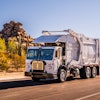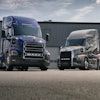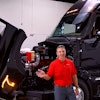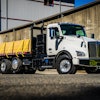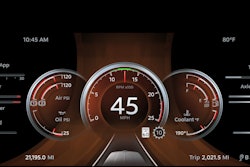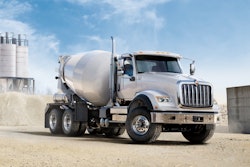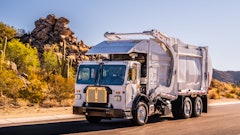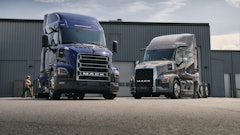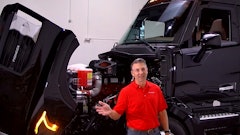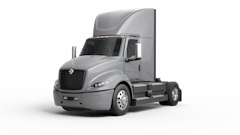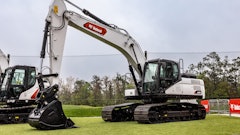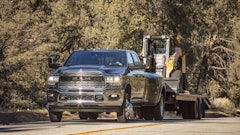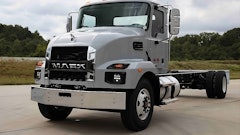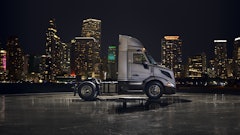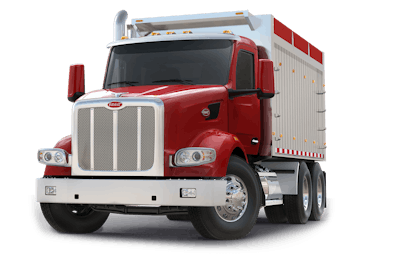
The Peterbilt conventional Model 567 has served as a vocational workhorse for the company since its 2013 introduction. This truck was specifically designed to withstand the demands of dump, logging, construction and other harsh vocational applications. It is available in a set-forward or set-back axle configurations with a 115-in. or 121-in. BBC and accommodates a 1,438-sq.-in. radiator for engines up to 605 hp. An updated multiplex wiring system allows seamless integration with many different types of bodies.
The inside of the truck has been updated with a 15-in., customizable digital display debuted on the new Model 579 on-highway truck. With all the technology being integrated onto modern trucks, the digital display simplifies the ability to communicate. Drivers decide what they want to see and how it is displayed. The digital display features a fully customizable user interface (UI), delivering an almost endless combination of digital gauges on the main screen at any one time. Operators control the digital UI through one of three different Drive View Zones:
- Minimized View eliminates everything but the speedometer and tachometer for minimal driver distraction.
- Basic View represents traditional information found on analog dashes with air and oil pressure, fuel and DEF level and water temperature all prominently displayed along with a speedometer and tachometer.
- Enhanced View builds upon the previous views displaying the maximum number of gauges from a list of over 30 information sources.
Operators can fine-tune the information shown to suit their individual needs through controls found on the all-new steering wheel. The UI delivers easy-to read information and full PTO integration. The latest safety systems fully integrated into the Digital Display. Key technologies include lane keeping assist, adaptive cruise control with auto resume, speed sign recognition, side objection detection, safety direct integration, multi-lane emergency braking and highway departure detection.
In addition, fully customizable B and C-panels on the Model 567 accommodate a wide variety of vocational needs.
Exterior updates to the Model 567 include a cab-mounted side mirror and increased DEF tank volume.
 The Peterbilt Model 520 was designed to withstand the harsh demands on the refuse industry, but it also finds applications in other vocations, such as concrete pumpers.Peterbilt
The Peterbilt Model 520 was designed to withstand the harsh demands on the refuse industry, but it also finds applications in other vocations, such as concrete pumpers.Peterbilt
A new7-in. digital display found in the center of the instrument cluster includes a conventional speedometer, tachometer and water and oil temperature gauges. Using an intuitive card system the display is able to relay important information to the driver at a glance, such as ADAS, PTO status, digital gauges, trip summary, drive summary and systems check. Drivers navigate through the different cards using a knob located to the right of the steering column.
The Model 520 added electronic stability control in September 2020 and is now available with Bendix Fusion with side objection detection, automatic emergency braking, lane departure warning, adaptive cruise control with auto resume, speed sign recognition and safety direct integration.

